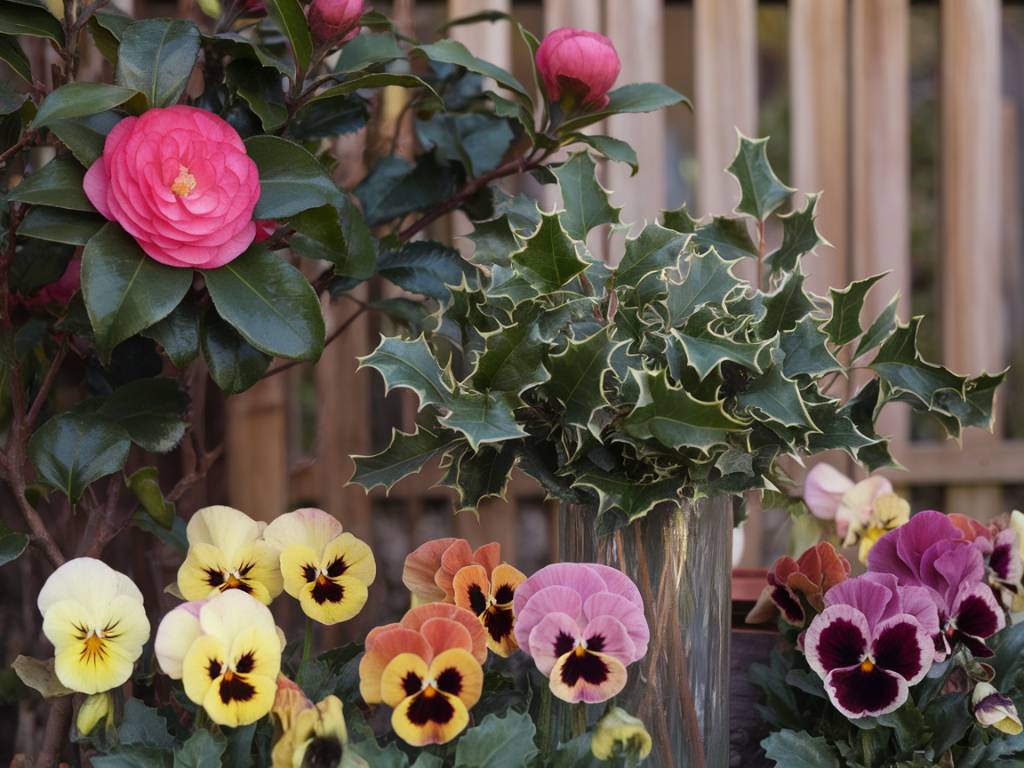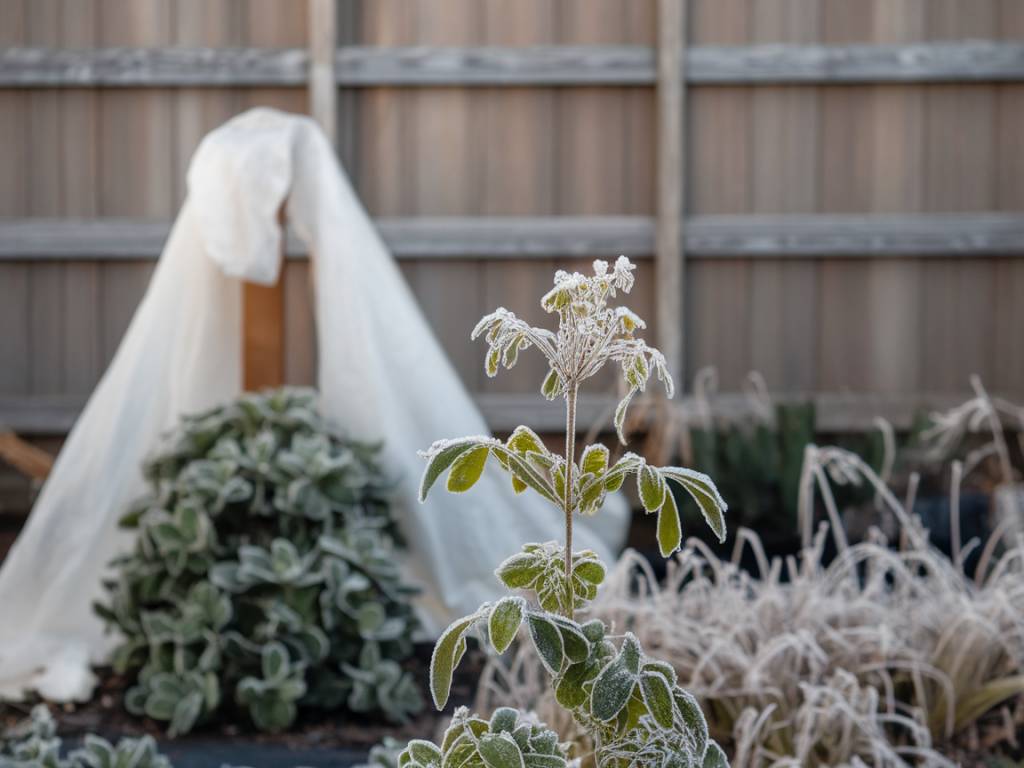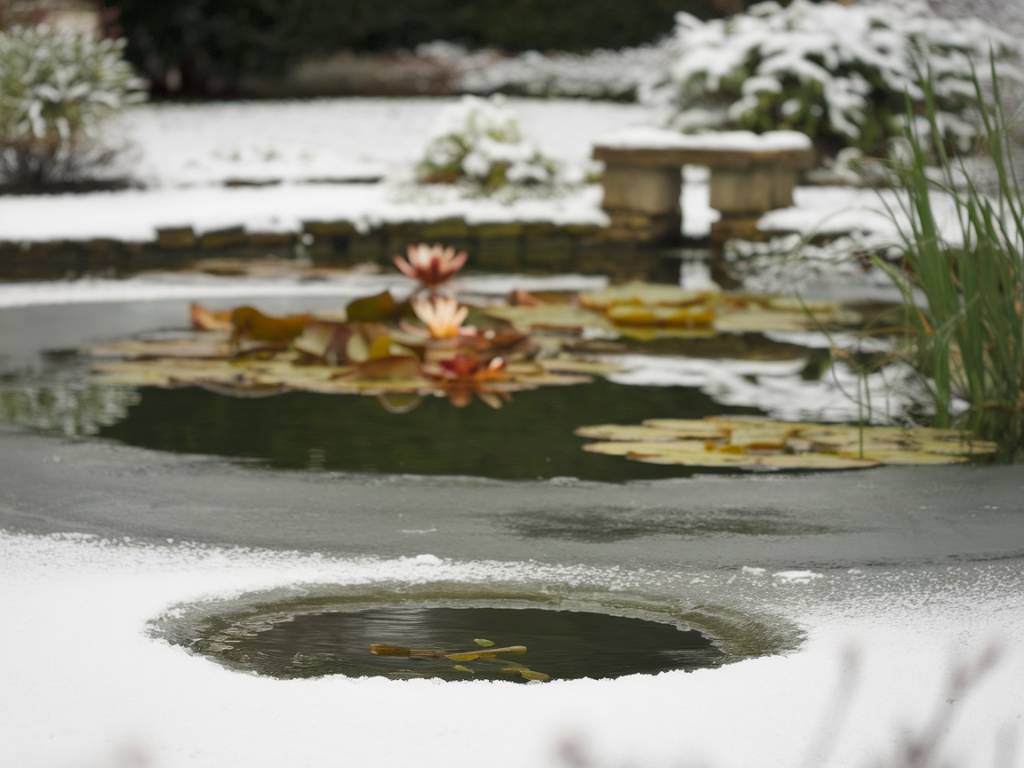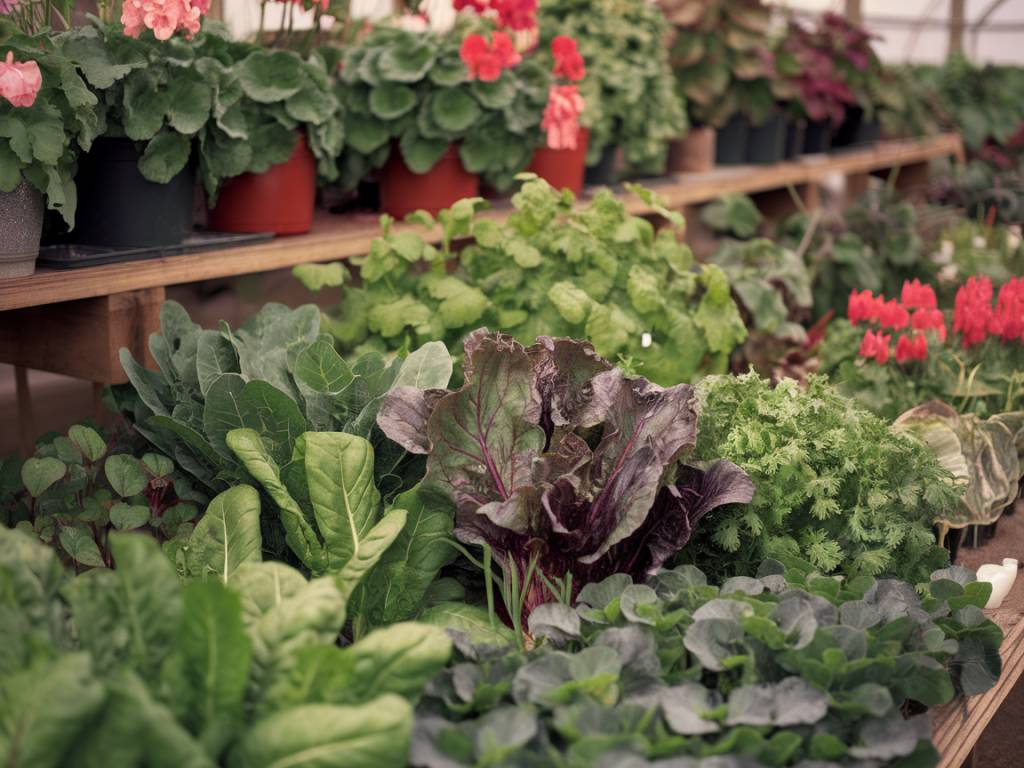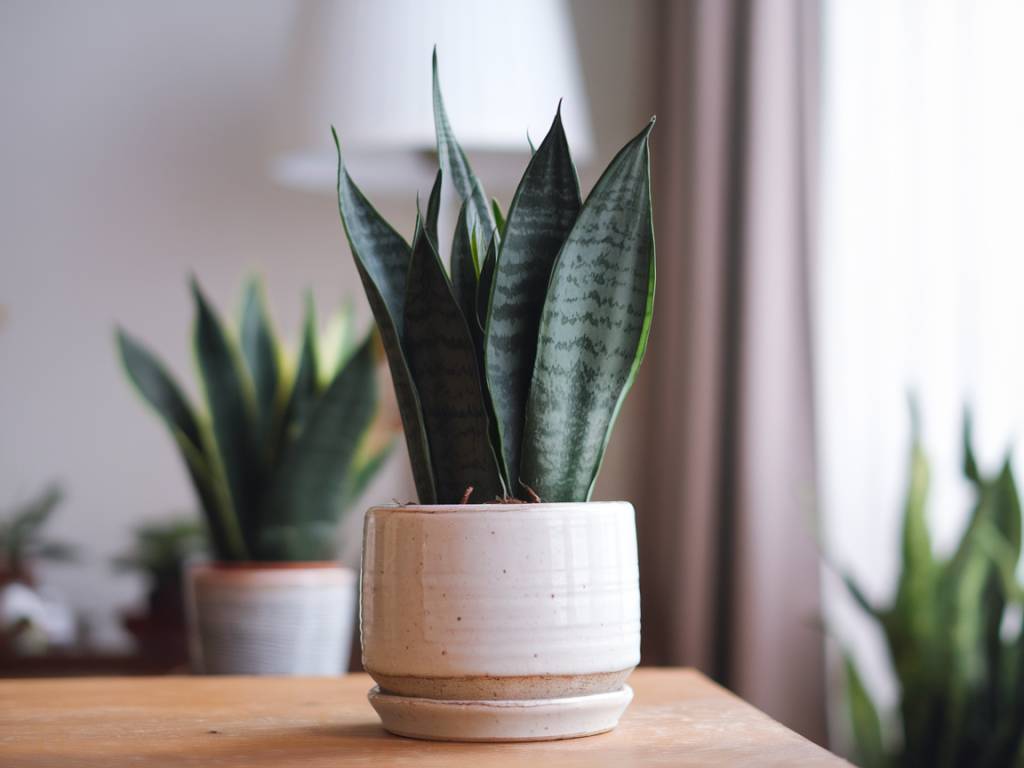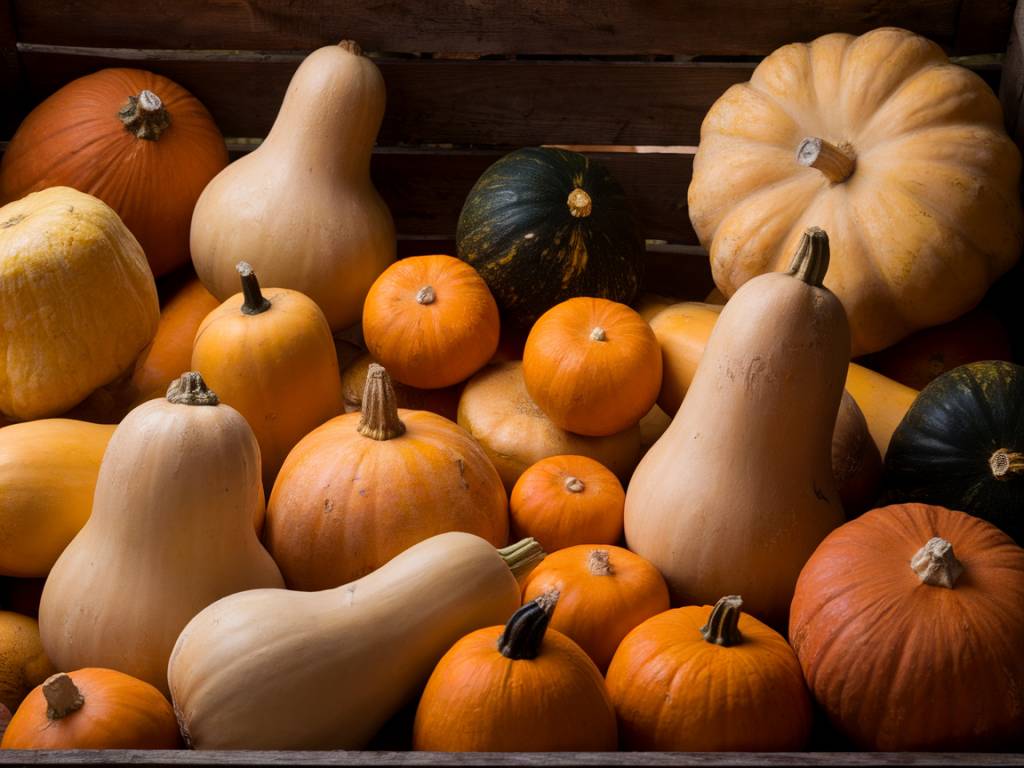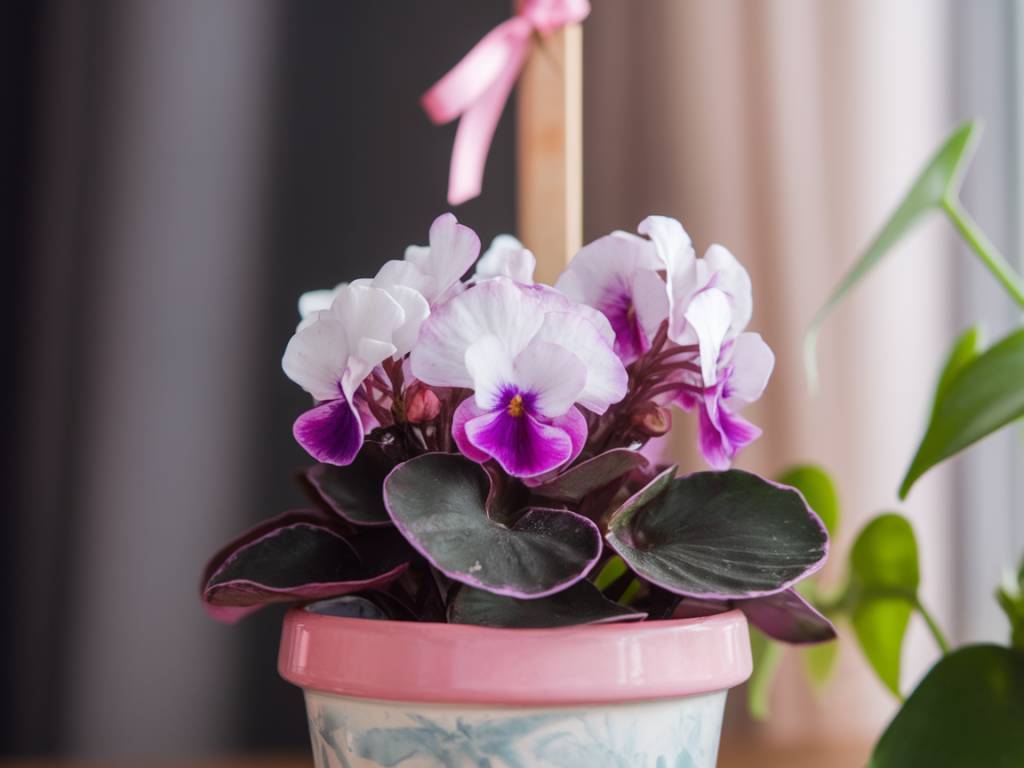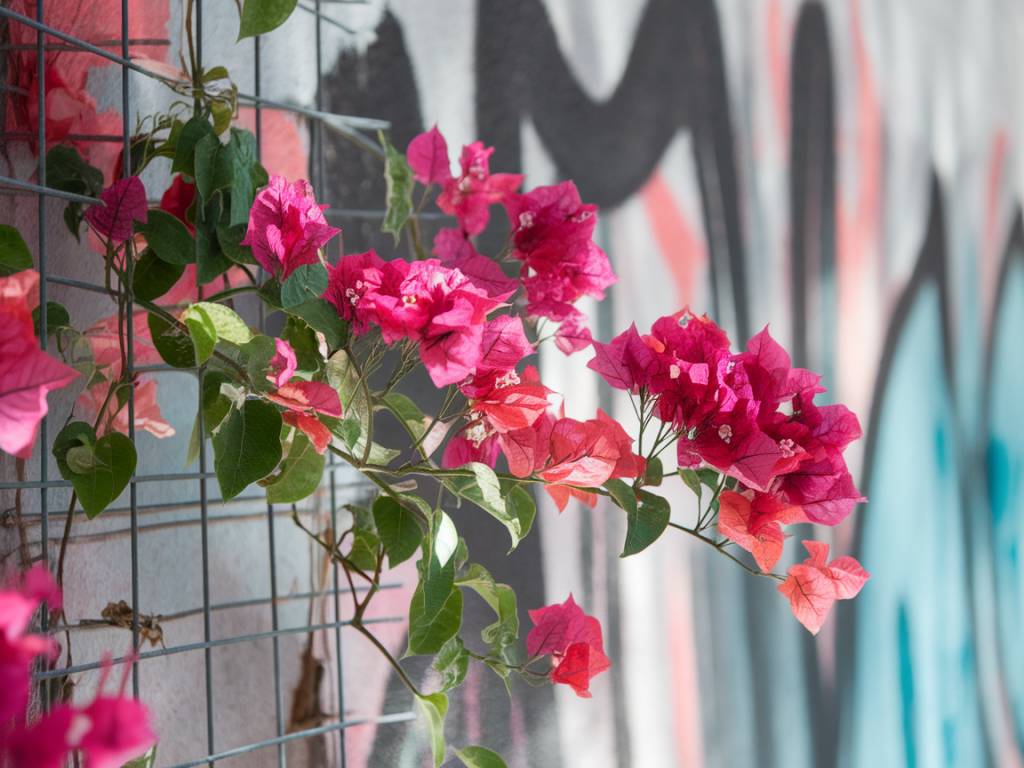The magic of winter blooming plants never ceases to amaze me. When most of the garden lies dormant and lifeless, the vibrant blooms of Camellias, Pansies, and other hardy winter flora bring a touch of color and life back to my green sanctuary. This article will explore the enchantment they bring, along with tips on how to care for them so they thrive during the colder months.
Camellias: The Winter Royalty
Camellias are among the most elegant of winter bloomers and their magnificent flowers are a sight to behold. These shrubs come in a variety of colors ranging from pure white to deep red, and some varieties feature double blooms that resemble roses.
First and foremost, Camellias prefer acidic soil with a pH between 5.0 and 6.5. Ensure that the soil is well-draining, as waterlogged roots can quickly lead to root rot. Mulch around the base of the plant to retain moisture and stabilize soil temperature, using organic material like pine needles or bark chips.
Camellias prefer a spot that gets morning sun and afternoon shade. Full sun can scorch their leaves while complete shade can hinder blooming. During the winter months, the amount of natural light decreases, making it crucial to observe how light filters through your garden and adjust accordingly.
Watering should be consistent, particularly if winters are dry in your region. However, avoid wetting the foliage to prevent fungal diseases. Feed your camellias with an acid-based fertilizer once in early spring and again in midsummer to support their growth and bloom production.
Remember to keep an eye out for common pests like aphids and scale. Addressing these issues promptly with neem oil or other organic treatments helps keep your camellias healthy.
Pansies: The Cheerful Communicators
Pansies are another winter gem. Their cheerful faces come in an array of colors, adding brightness and charm to any garden. These hardy flowers are easy to grow and handle the winter chill remarkably well.
Pansies thrive in well-drained soil that’s rich in organic matter. Incorporate compost into your planting beds to give these flowers a nutrient boost. Because they are heavy feeders, fertilize pansies regularly with a balanced, water-soluble fertilizer.
The location for pansies should receive plenty of sunlight. Although they are winter-hardy, they still need around six hours of sunlight per day to bloom profusely. During periods of frost, protect the plants with horticultural fleece or move containers to a sheltered spot if possible.
Pansies need regular watering, but be cautious not to overwater as this can lead to root rot. The soil should be moist but not soggy. Deadheading, or removing spent flowers, encourages more blooms and prevents the plant from diverting energy into seed production.
If you notice any pest issues such as aphids or spider mites, treat them promptly. Integrated pest management methods, such as introducing beneficial insects like ladybugs, can be particularly effective.
Other Winter Bloomers
Winter blooming plants aren’t limited to just Camellias and Pansies. Here are some other stunning options to consider:
- Hellebores: Known as the Christmas or Lenten rose, these perennials display lovely blooms from late winter to early spring. They prefer partial shade and well-drained soil.
- Winter Jasmine: Bright yellow flowers on bare stems make winter jasmine a striking addition. It requires full sun to part shade and can be trained to climb or spread as a ground cover.
- Sarcococca (Sweet Box): This evergreen shrub produces small, highly fragrant flowers in winter. It prefers shaded areas and well-drained soil.
- Snowdrops: These delicate, early-blooming bulbs signal the end of winter. Plant them in well-drained soil and spots that receive partial to full shade.
- Witch Hazel: This deciduous shrub’s spider-like, fragrant flowers bloom in late winter. It thrives in well-drained, slightly acidic soil and full sun to partial shade.
Preparing the Garden for Winter Bloomers
Effective garden preparation in autumn is essential. Start by cleaning up fallen leaves and plant debris that might harbor pests or diseases. Ensure your soil is in prime condition by incorporating organic matter like compost or well-aged manure.
Mulching not only protects plant roots from harsh winter temperatures but also helps retain soil moisture. Organic mulches such as bark chips, straw, or shredded leaves are excellent choices. Spread mulch around plants to a depth of about 2-3 inches, keeping it away from the base of trunks and stems to prevent rot.
Insufficient sunlight is more pronounced during winter, so assessing the light requirements of your plants is crucial. Consider pruning nearby trees or shrubs that might cast too much shade on your winter bloomers, ensuring they get adequate sunlight for optimal blossoming.
Managing Winter Weather
Winter weather can be unpredictable, with fluctuating temperatures posing challenges. Frost and severe cold can damage plants, so it’s vital to have protective measures in place.
- Frost cloth or horticultural fleece: Drape these over tender plants during frosty nights. They help trap heat and protect foliage from freezing temperatures.
- Mulch: A thick layer of mulch can insulate the soil, keeping plant roots warmer and helping prevent freeze-thaw cycles that can damage roots.
- Cloches and cold frames: These structures can provide extra protection for delicate plants. Position them over your plants to create a mini-greenhouse effect.
- Watering wisely: Watering your garden during a warm spell before a frost hits can actually protect plants. Moist soil absorbs more heat and releases it slowly, maintaining a more stable temperature.
If a brutal cold spell is forecast, consider bringing potted plants indoors or into a greenhouse if you have the space. Even an unheated garage can offer some protection from the harshest conditions.
The Joy of Pruning and Maintenance
Pruning winter-blooming plants often promotes healthier growth and more prolific blossoming. For Camellias, prune immediately after the final blooms have faded, which prevents cutting off next year’s flower buds. On the other hand, winter jasmine can be pruned in late spring after its flowering period ends.
Regularly inspect your plants for signs of disease or pest infestation. Look for discolored leaves, unexpected leaf drop, or unusual spots on the foliage. Treat promptly with organic solutions to keep your garden healthy.
Mulching and replenishing organic material around the plants consistently provides them with essential nutrients. Organic compost tea can also be a beneficial addition to your winter care regime, giving your plants an extra boost.
Savoring the Winter Garden
The winter garden holds a unique allure of its own. Watching Camellias unfurl their delicate petals amidst a frosty backdrop or admiring cheerful Pansies peeking through the snow is a reminder of nature’s resilience. Caring for winter-blooming plants connects us with the cyclic rhythms of nature, helping us find beauty and hope in every season. Happy gardening!
Samanta

